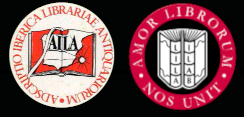


Home |
Temáticas |
Catálogos |
Pedidos |
  |  |
|||||||
|

|
RUGENDAS. (Johann Moritz) HABITANTE DE GOYAS, QUADRO A ÓLEO PINTADO SOBRE MADEIRA. |
|
|
Clique nas imagens para aumentar. PFEFFINGER. (Johann Friedrich) e Manuel da Maia. FORTIFICAÇAM MODERNA,Ou Recopilaçam De Differentes Methodos de fortificar, De que usaõ na Europa Os Espanhoes, Franceses, Italianos, & Hollandezes. Com um Diccionario alphabetico dos termos militares, Composta na Lingua Francesa Por Mr. Pfeffinger, & traduzido por ordem de Sua Magestade que Deos guarde. LISBOA, Na Officina Real Deslandesiana. M. DCCXIII. [1713] Com as licenças necessarias. In 4.º de 21,2x13,8 cm. Com [xvi], 336, [ii] págs. Encadernação da época inteira de pele, com nervos e ferros a ouro. Ilustrado em extratexto, com 46 gravuras em cobre, desdobráveis, algumas desenhas pelo próprio tradutor e outras por João Grillaud. Folha de rosto com marca do impressor com a divisa: Semper honore meo. Impressão muito nítida sobre papel de linho, com caracteres redondos e itálicos nos títulos dos capítulos e nas citações, ornamentada com cabeções, iniciais e florões de remate xilogravados. Exemplar com a encadernação desgastada com perdas superficiais de pele, em especial na lombada e na pasta anterior. Gravura n.º 14 com ligeira perda de suporte por acção de xilófagos. As páginas preliminares contêm o Prólogo do autor, o índice dos capítulos, e as licenças com aprovações de D. António Caetano de Sousa, Frei Veríssimo de Lima, e Manuel Pimentel e as finais a errata e uma página em branco. A obra original da autoria de Johann Friedrich Pfeffinger, foi publicada em francês, em Amsterdão, no ano de 1698. A atribuição da autoria da tradução a Manuel da Maia é unanimemente feita por Inocêncio e outros bibliógrafos, pois Manuel da Maia foi encarregado de traduzir obras francesas sobre fortificações, em 1708, pela Junta dos Três Estados, no início do reinado de D. João V. Muito raro. Não consta dos principais catálogos de leilões e de livrarias. Segundo Martins Gomes esta obra é uma enciclopédia muito completa da arte da fortificação, na qual vemos abordados e comparados diversos sistemas propostos por outros tantos autores, como Pagan, Antoine de Ville, Bombelle, Blondel, Ozanam, Sardi, Vauban, entre muitos outros. Está dividida em nove livros, cada um com cerca de 10 capítulos em média, com os seguintes títulos: Da fortificação em geral; Do desenho das fortificações; Das obras exteriores; Do Perfil; Das coisas necessárias em uma praça; Da fortificação de campanha; Da fortificação irregular à francesa; Da fortificação ofensiva; Da fortificação defensiva. Inclui um Dicionário de termos militares, nas páginas 11 a 54. Manuel da Maia (Lisboa, 1677 - 1768). Célebre arquitecto e engenheiro português, um dos mais destacados do nosso país, que deixou um dos mais marcantes legados nas suas áreas de actividade. Foi Brigadeiro do exército, 31.º Guarda-mor da Torre do Tombo de 1745 a 1768; Mestre de Campo General, Engenheiro-mor do reino, em 1754, Cronista da Casa de Bragança, Académico da Academia Real de História e Cavaleiro da Ordem de Cristo, em 1759. Participou na construção ou dirigiu grande número de projectos entre eles os mais importantes do século XVIII: a construção do Convento de Mafra, em aspectos relativos à engenharia, a reedificação do Hospital Termal da Rainha D. Leonor; a construção, em Lisboa, do notável aqueduto das Águas-livres; e a elaboração da planta da cidade de Lisboa, em 1718. Foi mestre de matemática do futuro rei D. José e dos infantes seus irmãos, responsável pelo projecto e direcção de várias obras, tais como: fortificações em Lisboa, 1701, Estremoz, 1703; Beira, 1704, Abrantes e Tancos, no mesmo ano e teve acção relevante no cerco de Badajoz, em 1705. A sua acção como Guarda-mor da Torre do Tombo, foi de excepcional importância, pois conseguiu salvar o Arquivo da Nação, durante o Terramoto de 1755. Depois colocou-o em novas instalações, no Mosteiro de S. Bento, onde permaneceu nos 200 anos seguintes e organizou a documentação segundo os princípios da sua época. No âmbito da incumbência que recebeu para traduzir obras francesas sobre fortificação, publicou, em 1708, sem o seu nome, a obra de António de Ville Tolozano, O Governador das Praças; e deu conta da maneira como dirigiu a construção do Aqueduto das Águas Livres na seguinte obra: Collecção, ou memorias historicas das principaes instrucçõens, e ordens de S. Magestade para a construcçãm do famoso Aqueducto das Agoas Livres. Imprensa Régia, Lisboa, 1745. Johann Friedrich Pfeffinger (Estraburgo, 1667 - 1730) Foi um notável jurista alemão, autor de uma célebre obra Vitriarius Illustratus, Freiburg, 1691, um extenso estudo dos comentários de Philipp Reinhard Vitriarius às Instituições de Justiniano. No entanto, além da sua formação jurídica tinha também profundos conhecimentos de história, filosofia, matemática, geografia e dominava a língua francesa, tendo escrito obras em latim, alemão e francês. Foi professor de matemática em Luneburgo e deu aulas de francês. Nestas áreas escreveu as seguintes obras: Problèmes mathématiques, Leipzig, 1688; Geographia Curiosa, Leipzig, 1690; Manière de fortifier à la Vaubanne, Amsterdam, 1690; Nouvelle fortification, ou recueil de differentes manières de fortifier en Europe, Amsterdam, 1698; Merkwürdigkeiten des 17. Jahrhunderts, Hamburgo, 1706. Depois da sua morte foi publicada a História da Casa Brunswick-Lüneburgo.
Title page with printer"s device with the motto: Semper honore meo. Very clear printing on linen paper, with round and italicised characters in the chapter titles and quotations, decorated with woodcut headpieces, decorated initials and finishing fleurons. Copy with worn binding with superficial losses of leather, especially on the spine and front board. Engraving no. 14 slightly detached due to worm work. The preliminary pages contain the author"s Prologue, the index of the chapters, and the licences with approvals of D. António Caetano de Sousa, Frei Veríssimo de Lima, and Manuel Pimentel. The final pages have the errata and a blank page. The original work by Johann Friedrich Pfeffinger was published in French, in Amsterdam in 1698. The authorship of the translation is unanimously attributed to Manuel da Maia by Inocêncio and other bibliographers, since Manuel da Maia was commissioned to translate French works on fortifications in 1708 by the Junta dos Três Estados, at the beginning of the reign of King João V. Very rare. Not listed in major auction and bookshop catalogues. According to Martins Gomes this work is a very complete encyclopaedia of the art of fortification, in which we see confronted and compared various systems proposed by many other authors, such as Pagan, Antoine de Ville, Bombelle, Blondel, Ozanam, Sardi, Vauban, among many others. It is divided into nine books, each with about 10 chapters on average, with the following titles: Of fortification in general; Of the design of fortifications; Of exterior works; Of the Profile; Of the things necessary in a stronghold; Of field fortification; Of irregular fortification à la française; Of offensive fortification; Of defensive fortification. Includes a Dictionary of military terms, on pages 11 to 54. Manuel da Maia (Lisbon, 1677 - 1768). Famous Portuguese architect and engineer, one of the most outstanding in our country, who left one of the most remarkable legacies in his areas of activity. He was a Brigadier in the army, 31st Chief Guardian of the Torre do Tombo (Portuguese National Archives) from 1745 to 1768; Field Marshall, Chief Engineer of the kingdom in 1754, Chronicler of the House of Bragança, Academician of the Royal Academy of History and Knight of the Order of Christ in 1759. He participated in the construction or directed a large number of projects among them the most important of the 18th century: the construction of the Convent of Mafra, in aspects related to engineering, the rebuilding of the Thermal Hospital of Queen Leonor; the construction, in Lisbon, of the remarkable aqueduct of Águas-livres; and the elaboration of the plan of the city of Lisbon, in 1718. He was maths master to the future king D. José and his brothers, responsible for the project and direction of several works, such as: fortifications in Lisbon, 1701, Estremoz, 1703; Beira, 1704, Abrantes and Tancos, in the same year and had relevant action in the siege of Badajoz, in 1705. His work as Chief Guardian of the Torre do Tombo was of exceptional importance, as he managed to save the Nation"s Archive during the 1755 Earthquake. He then placed it in new premises in the Monastery of S. Bento, where it remained for the next 200 years, and organised the documentation according to the principles of his time. In the context of the commission he received to translate French works on fortification, he published, in 1708, without his name, the work of António de Ville Tolozano, O Governador das Praças; and he gave an account of the way he directed the construction of the Águas Livres Aqueduct in the following work: Collecção, ou memorias historicas das principaes instrucçõens, e ordens de S. Magestade para a construcçãm do famoso Aqueducto das Agoas Livres. Imprensa Régia, Lisboa, 1745. Johann Friedrich Pfeffinger (Strasbourg, 1667 - 1730) was a notable German jurist, author of the famous work Vitriarius Illustratus, Freiburg, 1691, an extensive study of Philipp Reinhard Vitriarius" commentaries on Justinian"s Institutions. However, in addition to his legal training, he also had a thorough knowledge of history, philosophy, mathematics, geography and was proficient in French, having written works in Latin, German and French. He was a professor of mathematics in Luneburg and taught French. In these areas he wrote the following works: Problèmes mathématiques, Leipzig, 1688; Geographia Curiosa, Leipzig, 1690; Manière de fortifier à la Vaubanne, Amsterdam, 1690; Nouvelle fortification, ou recueil de differentes manières de fortifier en Europe, Amsterdam, 1698; Merkwürdigkeiten des 17. Jahrhunderts, Hamburg, 1706. After his death the History of the House Brunswick-Lüneburg was published. Referências/References: Luís Miguel Martins Gomes - Geometria dos traçados urbanos de fundação portuguesa. Dissertação de mestrado. ISCTE. Lisboa. 2007. Ernesto Soares, História da Gravura Artística em Portugal, II, pág. 331, n.º 1176 A. Grande Enciclopédia Portuguesa e Brasileira, XV, 952-953. Xavier da Cunha - Impressões Deslandesianas, II, 841. Inocêncio VI, 45; XVI, 258-260 e 411-412. Babosa Machado, III, 303 e 304. Referência: 2305PG016
Local: M-6-E-40 Caixa de sugestões A sua opinião é importante para nós. Se encontrou um preço incorrecto, um erro ou um problema técnico nesta página, por favor avise-nos. 
|
Pesquisa Simples




|
||
 |
|||
|